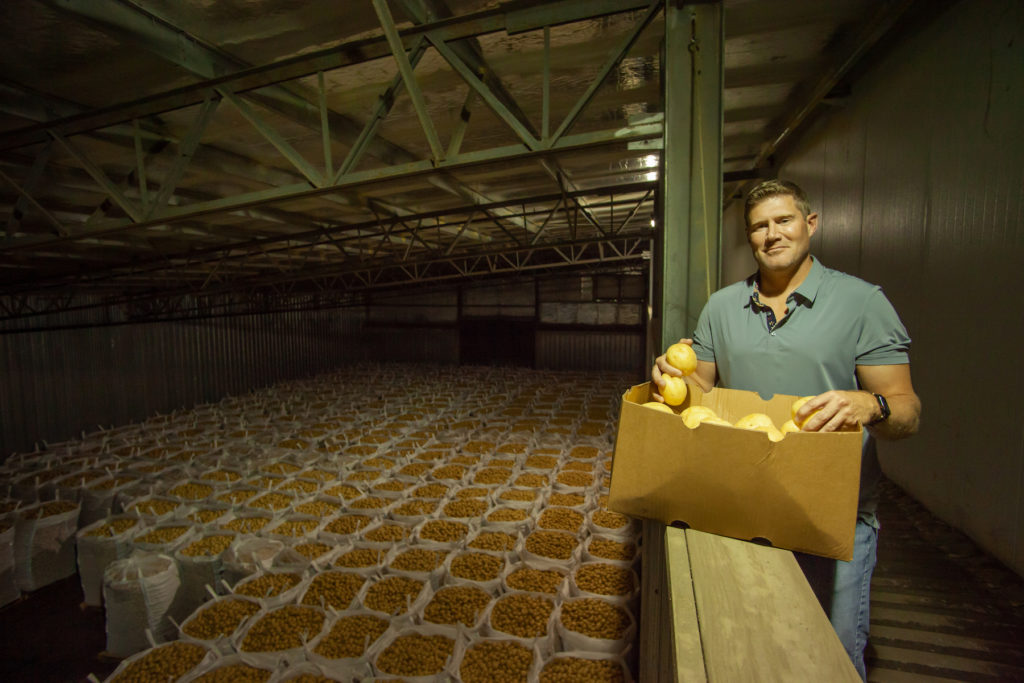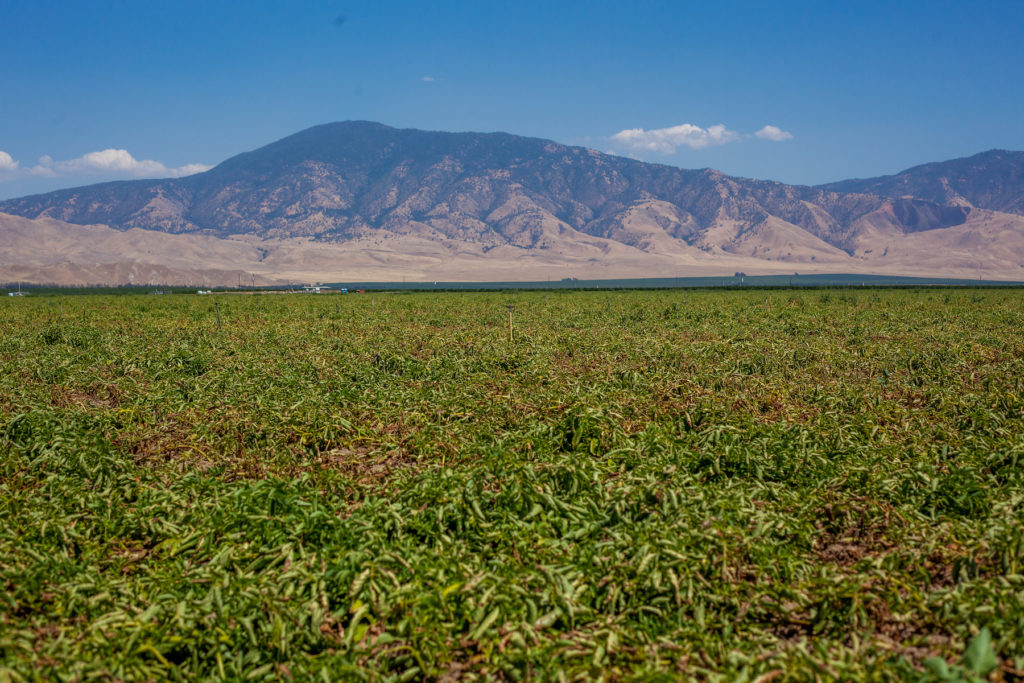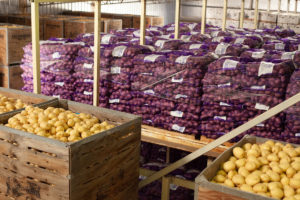
A shift in trends
Jason Davenport has a unique view of the potato industry. Founder and president of California-based Allied Potato, Davenport is a fifth-generation farmer and was elected the 2022-2023 chairman of Potatoes USA after several years on the board. He’s involved in multiple agriculture and export-related organizations, and was invited to speak at the World Potato Congress in Dublin, Ireland, this past May.
Being heavily involved in the industry has allowed him to see a shift in trends, including the whiplash effect in potato demand — a softening of demand due to the pandemic, followed by an immediate strengthening as lockdowns eased and a new pressure was put on supply chains and infrastructure.
“It has really shown how inadequate our supply chain is, because we’re not able to ship the products we need to as farmers. We’re impacted by that, and then our costs went up,” said Davenport.
Fuel, fertilizers, chemicals, labor and electricity have all seen dramatic increases.
“That’s a really troubling thing for a lot of people to have to deal with right now. But, global demand for potatoes is pretty strong,” he said.
Part of this is due to unforeseen circumstances, such as the Russia- Ukraine war, which limited the amount of food production coming out of Ukraine, and prices of fertilizers coming from Russia.
Davenport anticipates this continuing to have a large impact on the world’s food supply over the next 12-15 months, and possibly longer, and the effects will be seen in potatoes.

When demand is high, growers find a way to meet that demand by increasing yield or planting more acres. But with costs also high, growers seem to have less of an appetite to chase this demand by planting more potatoes. All aspects of production are coming under the microscope, with decisions being made accordingly. Why plant more potatoes when other crops require less and can still make reasonable returns?
Sometimes, optimizing your farm is the better way to go, and not planting more and operating in the more expensive category — just a more optimized view of the way you run your farm,” Davenport said. “That’s what we’re doing (at Allied Potato).”
EXERCISING CAUTION
From Europe to Australia to North America, Davenport noted a common understanding felt throughout the industry’s growers — everyone is exercising caution in going forward, planting exactly what they need as closely as possible.
Market observations can’t predict grower behaviors as a whole, and the general hesitancy felt within the industry may not accurately reflect how everything plays out for growers.
But the summer and fall market reports may suggest what Davenport thinks is happening in the field: There aren’t massive numbers of acres being planted to potato.
This is an interesting change because in the past, growers were always optimistic and planted more than necessary in the anticipation of other opportunities.
“And I do think there are opportunities around the corner, but with the uncertainty we’re seeing in the market — interest rates, labor restrictions, prices — you tend to pull back as a farmer and realize, ‘Hey, let’s live to fight another year and just grow what I need.’”
Despite occasionally seeing empty spaces on store shelves over the last couple of years, the effects of these growing decisions could still come as a surprise to consumers.

“I think most of us consumers want what we want when we want it, and when we can’t get it, we get upset,” said Davenport. “Our food supply is in the system for about 9-10 days, and when people make a run and go for certain products, stores tend to run out pretty quickly, and it’s difficult to restock that supply chain.”
Then, when people can’t get the products they want, they tend to stock up on them when they can — another complication the food supply chain might not be capable of handling.
Davenport likened it to the ever-infamous and unnecessary 2020 run on toilet paper, and even in speculating, does not suggest that there will be food shortages. But sometimes the mere mention of a strained food supply can unpredictably drive human behavior, and the overall global reaction could be interesting.
“You never know what’s going to happen, but I think we’re still going to be fine,” said Davenport. “There’s no accurate way to look at it. No one has a crystal ball. We just really need stability in the supply chain, and that’s really the key.”
WATER
Allied Potato has locations in California, Washington and Colorado, each of which has had their own bouts of drought and increasing costs for water. In a map released June 17 by U.S. Drought Monitor, most of the state of Colorado is under moderate to extreme drought conditions. It has been wearing heavily on the San Luis Valley, which drops from Colorado into New Mexico, where drought conditions are extreme to exceptional.
For California, even in years with good snowpack and precipitation, the water gets used quickly. There is also the Sustainable Groundwater Management Act (SGMA), which is ushering in new policy for how water is conserved and saved in the state.
“We’ve got to invest,” said Davenport. “I really feel that, as a country, we haven’t done enough to invest in water, particularly out West for agriculture, or in our infrastructure. Our port systems need to be able to handle more volume, because as consumer demand drives up imported goods, it puts a lot of strain on the port system and on ocean carriers.”
POTATOES USA
Davenport and the team at Potatoes USA are continuing the goal of implementing positive promotional messaging that supports the nutritional value of the potato. This includes continuing to develop relationships in Belgium, Ireland, United Kingdom, the Netherlands and France to align consumer messaging and promote the potato’s health benefits.
Even though the countries are friendly competitors, Davenport sees the value in supporting fellow potato-growing nations with research and the right messaging.
“There is a lot of misunderstanding out there that we have to combat. It’s not just coming from our country; it’s coming from other countries. So, it’s important we’re all on the same page with how we want to express our messaging,” Davenport said.
These immediate goals are heavily supported by the longer-term goals of supporting growers with marketing, and helping them to reach new markets both domestically and internationally.
While Davenport is focused on optimizing his own farm and keeping costs under control, he’s been spending more time at congressional events and speaking with leaders to help them understand what is going on at the ports and how it’s affecting agriculture. His top goal for farmers is to help improve the supply chain with a long-term, regimented solution and meaningful policy changes for the next time the food supply chain becomes strained.
“Potatoes are a staple crop with so many benefits,” said Davenport. “To know that we’ve got such a great vegetable to rely on for food security in our country — not every country in the world has that.”
Top: Jason Davenport in an Allied Potato storage warehouse. Photo: Matt Hannon







